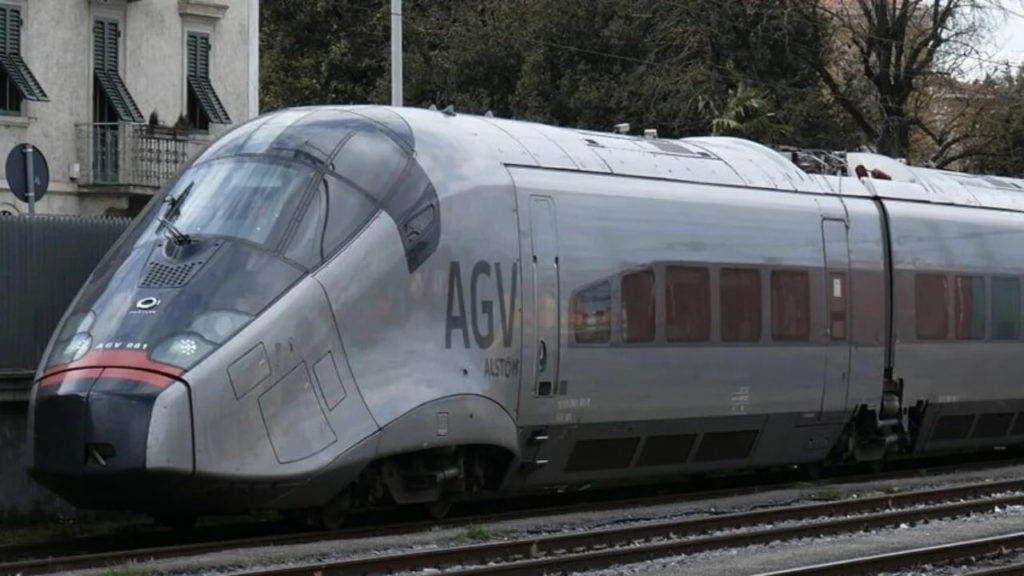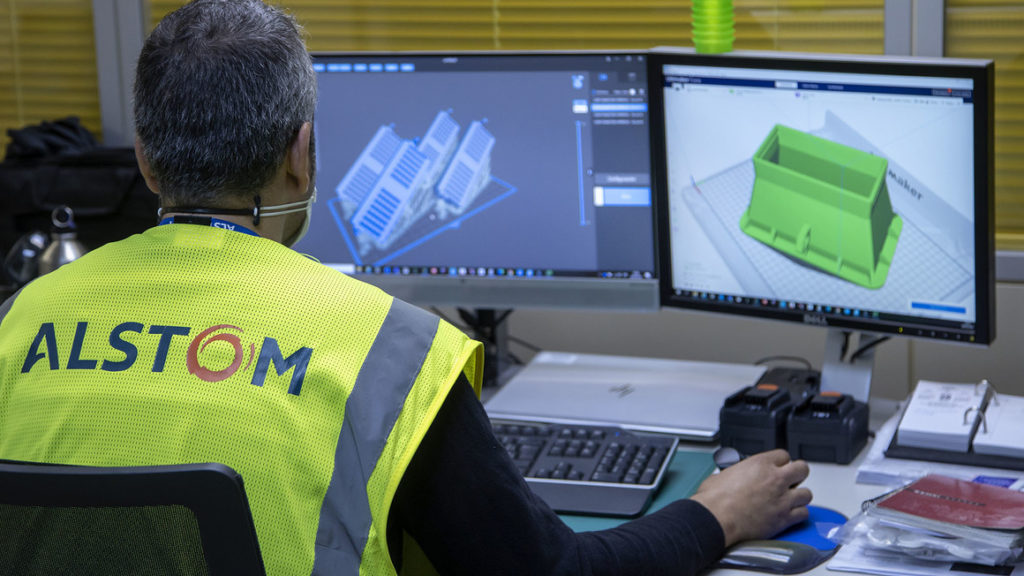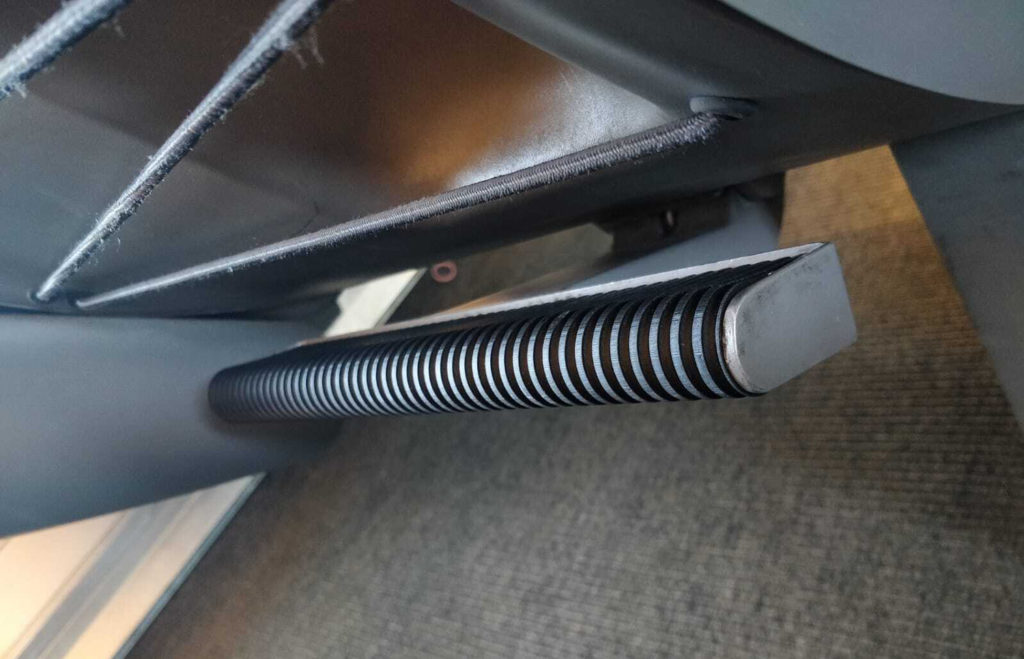Trains are vital to transportation all over the world, but as they get older, it becomes increasingly difficult to keep them in service. Finding replacement parts is often a key factor, and this usually boils down to the components being discontinued for various reasons. Without a way to install high-quality replacement parts railways risk delaying the transportation of people and goods, and ultimately their bottom line.
Alstom, one of the largest railway companies in the world, faced this first hand when outdated footrests threatened to sideline many of its fleets. The company needed a way to fix its trains quickly, and do so in a cost effective manner. Alstom’s solution? 3D printing. The business sought Lorenzo Gasparoni, its 3D printing and 3D scanning product leader in Italy, to establish additive manufacturing (AM) practices to help keep its aging trains operational while reducing the time needed to service the carriages.

An Alstom AGV Train. (Source: Nexa3D)
Alstom is no stranger to 3D printing and had previously partnered with BASF Replique and Stratasys to use AM to solve sourcing issues in the past. This time, however, it wanted to stay internal to its manufacturing and service center in Sesto San Giovanni, Italy, and needed Lorenzo Gasparoni for the job. The two have been in working together since 2019, but, in mid-2022, a new project arose: the use of 3D printing to produce hundreds of footrests to replace older counterparts.
Lorenzo got to work and iterated through many materials and printing methods to narrow down the best option for this task. While his team did explore selective laser sintering, the company ultimately landed on vat photopolymerization and even examined materials from Carbon, EnvisionTEC, and 3D Systems. In the end, Alstom chose Nexa3D and the NXE 400Pro because of its open platform, large build volumes, fast printing speeds, and monocomponent resins.

An Alstom employee designing the 3D printed footrests. (Source: Nexa3D)
“The minimum order quantity for injection molding is over 500 parts, and at that volume the cost is about €200 per part. With the NXE 400Pro there is no minimum, and the cost is €50 per part so it’s much more affordable,” said Gasparoni, 3D printing and 3D scanning product leader at Alstom.
With the NXE 400Pro, Lorenzo saves €150 per part and can produce 30 footrests in 10 hours with Henkel Loctite’s xABS3843 resin. The resin is comparable to the original footrest material— Lexan— and the new 3D printed footrests require no post-processing before installation. So far, 100 replacement footrests have been installed into Alstom’s rail cars, and, with this new system, more can be printed on demand as needed.

A 3D printed footrest installed on an Alstom train. (Source Nexa3D)
Alstom highlights what 3D printing can bring to the table for railway manufacturing, and continues the trend of railways partnering with companies like Siemens, DiManEx, and Wabtec to incorporate additive manufacturing into its production process. This trend is on pace to grow as 3D printing matures, and if Alstom can continue to produce excellent parts at low quantities and low prices, then it could become the most affordable way to maintain older trains.
Subscribe to Our Email Newsletter
Stay up-to-date on all the latest news from the 3D printing industry and receive information and offers from third party vendors.
You May Also Like
Gorilla Sports GE’s First 3D Printed Titanium Cast
How do you help a gorilla with a broken arm? Sounds like the start of a bad joke a zookeeper might tell, but it’s an actual dilemma recently faced by...
Nylon 3D Printed Parts Made More Functional with Coatings & Colors
Parts 3D printed from polyamide (PA, Nylon) 12 using powder bed fusion (PBF) are a mainstay in the additive manufacturing (AM) industry. While post-finishing processes have improved the porosity of...
$25M to Back Sintavia’s Largest Expansion of Metal 3D Printing Capacity Since 2019
Sintavia, the digital manufacturing company specializing in mission-critical parts for strategic sectors, announced a $25 million investment to increase its production capacity, the largest expansion to its operations since 2019....
Velo3D Initiates Public Offering in a Bid to Strengthen Financial Foundations and Drive Future Growth
Velo3D (NYSE: VLD) has been among a number of publicly traded 3D printing firms that have attempted to weather the current macroeconomic climate. After posting a challenging financial report for 2023,...































